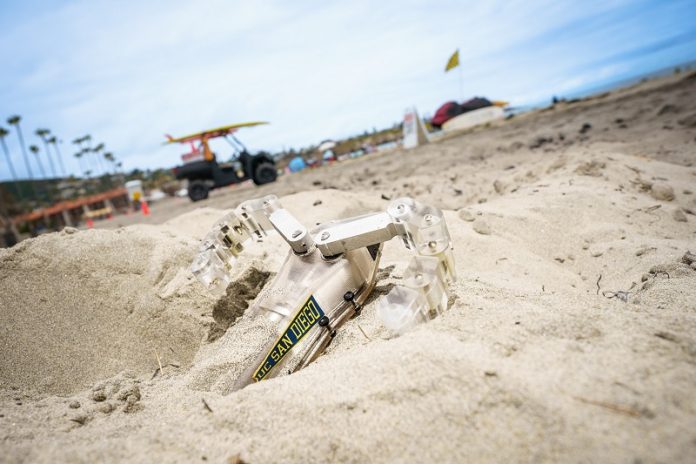
Scientists at the University of California San Diego have developed a remarkable robot that can navigate and swim through sand, mimicking the movements of baby turtles.
This innovative robot utilizes its front limbs, which resemble oversized flippers, to swim beneath the sand and effortlessly emerge back to the surface.
By observing and learning from nature, these researchers have made significant progress in understanding how robots can effectively traverse sand, opening doors to a wide range of applications from soil analysis to extraterrestrial exploration.
Let’s delve into the fascinating details of this groundbreaking invention.
The team of roboticists at UC San Diego faced numerous challenges while creating a robot capable of sand travel.
Unlike other environments, sand poses unique obstacles due to its friction, unpredictable behavior, and ability to switch between liquid and solid states.
To tackle these hurdles, the researchers turned to nature for inspiration and studied the hatchlings of sea turtles, known for their remarkable sand-swimming abilities.
By emulating the hatchlings’ flipper-like fins, the team designed a robot that generates propulsive forces, steers, and detects obstacles.
To successfully move through sand, the robot features a tapered body design and a shovel-shaped nose. This streamlined structure helps minimize resistance and allows the robot to swim beneath the surface effectively.
The robot’s flipper-like limbs not only generate the required propulsion but also serve as force sensors to detect obstacles while in motion.
Additionally, the bot is equipped with terrafoils, specialized surfaces on its nose, which help maintain a level depth in the sand by controlling lift.
The roboticists extensively tested their creation both in the lab and at a nearby beach. They observed that the robot’s speed decreased when moving through wet sand, which offers more resistance.
However, the results were promising, with the robot capable of traveling at a speed of 1.2 millimeters per second, comparable to other subterranean animals such as worms and clams. The ability to operate untethered and be controlled wirelessly through WiFi adds to the robot’s versatility.
This sand-swimming robot has the potential to revolutionize various fields, including inspecting grain silos, measuring soil contaminants, exploring the seafloor, and aiding in search and rescue operations.
While scientists still have much to learn about how robots with flipper-like appendages navigate within sand, this innovative creation brings us closer to understanding the complexities of sand locomotion.
The researchers’ future goals involve increasing the robot’s speed and enabling it to burrow into the sand itself, expanding its capabilities further.
In conclusion, this remarkable turtle-inspired robot represents a significant milestone in robotics and sand exploration.
By mimicking the unique movements of baby turtles, scientists have unlocked the potential to delve into the secrets of sand and leverage its properties for a wide range of applications.
This pioneering technology demonstrates the power of observing nature and applying its principles to overcome scientific challenges.
Follow us on Twitter for more articles about this topic.



